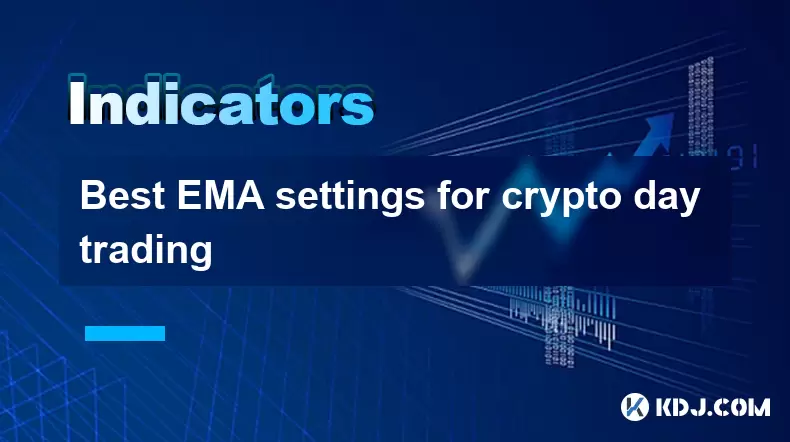-
 Bitcoin
Bitcoin $118,209.3536
1.16% -
 Ethereum
Ethereum $3,151.7546
5.98% -
 XRP
XRP $2.9277
2.35% -
 Tether USDt
Tether USDt $1.0000
0.00% -
 BNB
BNB $689.7099
1.26% -
 Solana
Solana $163.4270
1.91% -
 USDC
USDC $1.0000
0.02% -
 Dogecoin
Dogecoin $0.1983
3.74% -
 TRON
TRON $0.3008
0.51% -
 Cardano
Cardano $0.7435
2.86% -
 Hyperliquid
Hyperliquid $47.6547
-0.48% -
 Stellar
Stellar $0.4625
2.79% -
 Sui
Sui $3.9921
2.71% -
 Chainlink
Chainlink $16.0608
4.23% -
 Hedera
Hedera $0.2348
1.56% -
 Bitcoin Cash
Bitcoin Cash $496.6985
1.25% -
 Avalanche
Avalanche $21.9038
5.41% -
 UNUS SED LEO
UNUS SED LEO $8.8356
-1.88% -
 Shiba Inu
Shiba Inu $0.0...01364
5.31% -
 Toncoin
Toncoin $3.1102
4.35% -
 Litecoin
Litecoin $95.9756
3.59% -
 Polkadot
Polkadot $4.0925
5.78% -
 Monero
Monero $333.7622
-1.44% -
 Uniswap
Uniswap $9.1968
2.25% -
 Bitget Token
Bitget Token $4.6378
6.23% -
 Pepe
Pepe $0.0...01282
6.77% -
 Dai
Dai $1.0002
0.03% -
 Ethena USDe
Ethena USDe $1.0005
0.00% -
 Aave
Aave $329.9143
4.49% -
 Bittensor
Bittensor $441.4995
6.89%
Best EMA settings for crypto day trading
The Exponential Moving Average (EMA) helps crypto day traders spot trends and entry points by prioritizing recent price data, with popular settings like 9, 12, and 21 EMAs for quick, responsive signals.
Jul 14, 2025 at 03:29 pm

Understanding EMA and Its Role in Crypto Day Trading
The Exponential Moving Average (EMA) is a crucial technical indicator used by traders to identify trends and potential entry or exit points in the market. Unlike the Simple Moving Average (SMA), EMA gives more weight to recent price data, making it more responsive to new information. In the context of crypto day trading, where volatility is high and opportunities arise quickly, using the right EMA settings can make a significant difference.
Traders often use multiple EMAs together to generate signals based on crossovers and divergences. The most commonly referenced periods include 9, 12, 20, 26, 50, and 200 EMAs. Each has its own significance depending on the time frame and strategy being employed.
Selecting the Optimal EMA Combinations for Short-Term Crypto Trading
When determining the best EMA settings for crypto day trading, many professionals rely on dual EMA combinations that offer timely and accurate signals. A popular configuration involves using the 9-period EMA and 21-period EMA on shorter time frames like 5-minute or 15-minute charts.
This combination allows traders to capture short-term momentum while filtering out some of the noise found in fast-moving crypto markets. When the 9 EMA crosses above the 21 EMA, it may indicate a bullish trend, while a cross below could suggest bearish momentum.
Another effective pairing is the 12 EMA and 26 EMA, which is part of the MACD calculation but can also be used independently. These values provide slightly delayed signals compared to the 9/21 setup but tend to produce fewer false positives during choppy market conditions.
Using Triple EMA Strategies for Enhanced Signal Accuracy
Some advanced traders prefer a triple EMA strategy to confirm trends and reduce false signals. A common triple EMA setup includes the 5, 20, and 50 EMAs. This configuration helps distinguish between short-term fluctuations and longer-term trends.
In this approach, when the 5 EMA crosses above both the 20 and 50 EMAs, it suggests a strong uptrend. Conversely, if the 5 EMA falls below the 20 and 50 EMAs, it might signal an impending downtrend. Traders can also look for crossovers between the 20 and 50 EMAs to gauge medium-term directional bias.
It’s important to note that no single EMA setting works across all cryptocurrencies or time frames. Assets like Bitcoin and Ethereum may behave differently from smaller altcoins due to variations in liquidity and volatility.
Incorporating EMA with Other Indicators for Better Trade Confirmation
While EMA is powerful on its own, combining it with other tools such as Relative Strength Index (RSI), Volume, and Bollinger Bands can improve trade accuracy. For example, if the price is above the 20 EMA and RSI is above 50, it reinforces the strength of a bullish move.
Volume plays a key role in confirming EMA-based signals. A breakout above a key EMA level should ideally coincide with increased volume to validate the move. Similarly, Bollinger Bands can help identify overbought or oversold conditions when combined with EMA direction.
For instance, if the price touches the upper Bollinger Band and remains above the 20 EMA, it could indicate a strong uptrend. However, if the price pulls back toward the EMA without breaking it, that may present a re-entry opportunity.
Customizing EMA Settings Based on Market Conditions
Market conditions play a major role in how effective certain EMA settings are. During high volatility, shorter EMAs like the 9 or 12 EMA respond more quickly to price changes, allowing traders to enter positions early. In contrast, during sideways or consolidating markets, longer EMAs like the 20 or 50 EMA can help avoid premature exits caused by false breakouts.
Time frames also influence optimal EMA settings. On a 1-minute chart, very short EMAs such as 5 and 8 might be more suitable, while on a 1-hour chart, traders may opt for 20 and 50 EMAs.
Backtesting different EMA configurations on historical data can help traders determine what works best for specific assets. It's essential to adjust settings dynamically rather than relying solely on default values.
Frequently Asked Questions (FAQs)
- Can I use EMA for scalping in crypto trading?
Yes, EMA can be effective for scalping when using short-term settings like the 5 and 8 EMA on 1-minute or 5-minute charts. These allow traders to catch quick moves and exit before reversals occur.
How do I set up EMA on popular trading platforms like Binance or TradingView?
On Binance, go to the chart section, click on 'Indicators', search for EMA, and input your desired period. On TradingView, type EMA in the indicator search bar and customize the length and color preferences accordingly. Is EMA better than SMA for crypto day trading?
EMA tends to be more responsive to recent price action, making it generally more suitable for fast-moving crypto markets. However, some traders combine EMA and SMA to filter out noise and enhance confirmation signals. What time frames work best with EMA strategies?
Shorter time frames like 5-minute and 15-minute charts are ideal for active day trading with EMA, while 1-hour and 4-hour charts suit swing traders who want to follow broader trends using longer EMAs. Disclaimer:info@kdj.com
The information provided is not trading advice. kdj.com does not assume any responsibility for any investments made based on the information provided in this article. Cryptocurrencies are highly volatile and it is highly recommended that you invest with caution after thorough research!
If you believe that the content used on this website infringes your copyright, please contact us immediately (info@kdj.com) and we will delete it promptly.
- Eclipse Airdrop and Token Supply: Navigating the Crypto Landscape
- 2025-07-16 18:50:13
- Solana Price, Zebec Network, and Remittix: Decoding the Crypto Signals
- 2025-07-16 18:30:13
- Crypto Picks & Altcoin Breakout: August's Hottest Trends
- 2025-07-16 18:30:13
- XLM Stellar Analyst Prediction: Is a $10 Target on the Horizon?
- 2025-07-16 19:10:12
- Dubai, Ripple, and Tokenization: A New Era for Real Estate
- 2025-07-16 18:50:13
- Unilabs Finance (UNIL): Primed for a Massive 2025 Launch?
- 2025-07-16 19:15:12
Related knowledge

Advanced RSI strategies for crypto
Jul 13,2025 at 11:01am
Understanding the Basics of RSI in Cryptocurrency TradingThe Relative Strength Index (RSI) is a momentum oscillator used to measure the speed and chan...

Crypto RSI for day trading
Jul 12,2025 at 11:14am
Understanding RSI in the Context of Cryptocurrency TradingThe Relative Strength Index (RSI) is a momentum oscillator used to measure the speed and cha...

Crypto RSI for scalping
Jul 12,2025 at 11:00pm
Understanding RSI in the Context of Crypto TradingThe Relative Strength Index (RSI) is a momentum oscillator widely used by traders to measure the spe...

What does an RSI of 30 mean in crypto
Jul 15,2025 at 07:07pm
Understanding RSI in Cryptocurrency TradingRelative Strength Index (RSI) is a momentum oscillator widely used in cryptocurrency trading to measure the...

What does an RSI of 70 mean in crypto
Jul 13,2025 at 06:07pm
Understanding the RSI Indicator in Cryptocurrency TradingThe Relative Strength Index (RSI) is a widely used technical analysis tool that helps traders...

Does RSI work in a bear market for crypto
Jul 16,2025 at 01:36pm
Understanding RSI in Cryptocurrency TradingThe Relative Strength Index (RSI) is a momentum oscillator used by traders to measure the speed and change ...

Advanced RSI strategies for crypto
Jul 13,2025 at 11:01am
Understanding the Basics of RSI in Cryptocurrency TradingThe Relative Strength Index (RSI) is a momentum oscillator used to measure the speed and chan...

Crypto RSI for day trading
Jul 12,2025 at 11:14am
Understanding RSI in the Context of Cryptocurrency TradingThe Relative Strength Index (RSI) is a momentum oscillator used to measure the speed and cha...

Crypto RSI for scalping
Jul 12,2025 at 11:00pm
Understanding RSI in the Context of Crypto TradingThe Relative Strength Index (RSI) is a momentum oscillator widely used by traders to measure the spe...

What does an RSI of 30 mean in crypto
Jul 15,2025 at 07:07pm
Understanding RSI in Cryptocurrency TradingRelative Strength Index (RSI) is a momentum oscillator widely used in cryptocurrency trading to measure the...

What does an RSI of 70 mean in crypto
Jul 13,2025 at 06:07pm
Understanding the RSI Indicator in Cryptocurrency TradingThe Relative Strength Index (RSI) is a widely used technical analysis tool that helps traders...

Does RSI work in a bear market for crypto
Jul 16,2025 at 01:36pm
Understanding RSI in Cryptocurrency TradingThe Relative Strength Index (RSI) is a momentum oscillator used by traders to measure the speed and change ...
See all articles

























































































